The Importance of a Disaster Management Committee
In today's unpredictable world, the significance of a Disaster Management Committee cannot be overstated. These committees serve as the backbone of community resilience, playing a pivotal role in preparing for, responding to, and recovering from emergencies. Imagine a community that can swiftly bounce back from a natural disaster or a public health crisis. This is not just a dream; it can be a reality with a well-organized disaster management committee in place.
At its core, a disaster management committee is a group of dedicated individuals who come together to create a robust framework for handling crises. They are not just first responders; they are planners, trainers, and community educators. Their work involves a multitude of tasks, from conducting risk assessments to organizing training drills, ensuring that every member of the community knows what to do when disaster strikes.
One of the most crucial aspects of a disaster management committee is its ability to foster collaboration among various stakeholders. This includes local government agencies, emergency services, and community organizations. By creating a cohesive network, these committees enhance the efficiency of response efforts, ensuring that resources are allocated where they are needed most. Think of it as a finely tuned orchestra; every instrument must play its part in harmony to produce a beautiful symphony of safety and preparedness.
Moreover, the importance of community involvement cannot be overlooked. A disaster management committee engages residents, empowering them to take part in preparedness efforts. This not only builds a sense of ownership but also enhances the overall resilience of the community. When people feel invested in their safety, they are more likely to contribute to the planning and execution of emergency protocols.
In summary, the role of a disaster management committee is not just about response; it's about prevention, education, and recovery. These committees are essential for creating a culture of safety, where communities are not just reactive but proactive. In a world where disasters can strike at any moment, having a well-prepared committee can mean the difference between chaos and order, despair and hope.
- What is the main goal of a disaster management committee? The primary goal is to prepare for, respond to, and recover from disasters effectively, ensuring community safety and resilience.
- How can I get involved with my local disaster management committee? You can volunteer, participate in training sessions, or attend community meetings to learn more about disaster preparedness.
- Why is community involvement important in disaster management? Engaging the community ensures that everyone is informed and prepared, which enhances overall resilience and response capabilities.
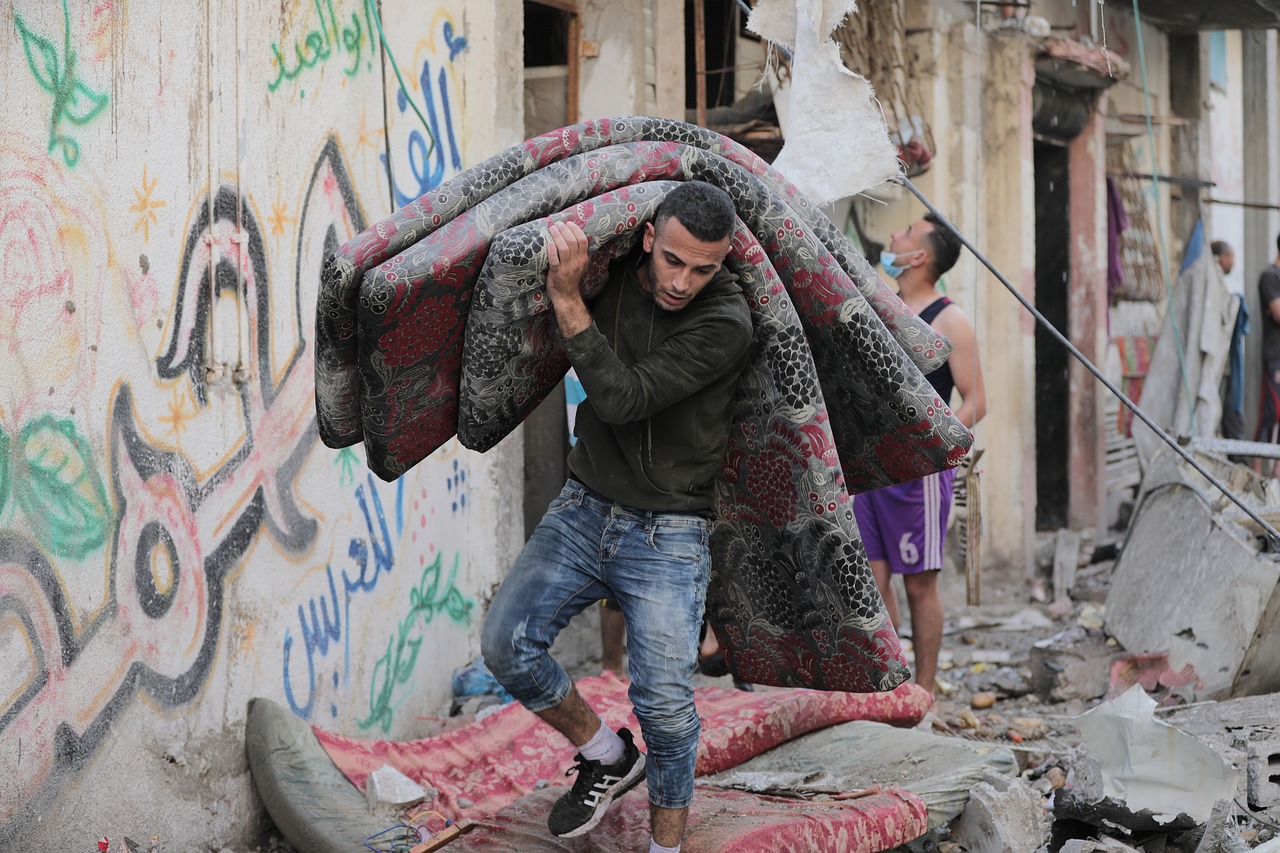
Understanding Disaster Management
This article explores the critical role of disaster management committees in preparing for, responding to, and recovering from emergencies, highlighting their importance in community resilience and safety.
Disaster management is a comprehensive approach that involves a series of processes designed to prepare for, respond to, and recover from disasters. It’s crucial for communities to grasp the various components of disaster management to enhance their preparedness and resilience in the face of potential emergencies. Think of it as a well-orchestrated symphony: each section needs to play its part harmoniously to create a successful outcome.
The disaster management cycle typically consists of four main phases: mitigation, preparedness, response, and recovery. Understanding these phases helps communities identify what actions to take at different stages of a disaster.
| Phase | Description |
|---|---|
| Mitigation | Efforts to reduce the impact of disasters, such as building codes and land-use planning. |
| Preparedness | Planning and training to ensure readiness for emergencies. |
| Response | Immediate actions taken to protect lives and property during a disaster. |
| Recovery | Efforts to restore the community to normalcy after a disaster. |
To effectively manage disasters, committees must engage in risk assessment, which involves identifying potential hazards and vulnerabilities within the community. For example, if a community is prone to flooding, the committee would prioritize resources to develop flood control measures and educate residents on evacuation routes. This proactive strategy not only saves lives but also minimizes property damage.
Moreover, training and drills are fundamental components of disaster management. Regular exercises allow committee members and volunteers to practice their roles and refine their skills, ensuring that when a disaster strikes, everyone knows exactly what to do. Imagine a fire drill in a school; the more familiar students and staff are with the exit routes, the quicker and safer the evacuation will be in an actual emergency.
In conclusion, understanding disaster management is not just about having a plan; it’s about fostering a culture of preparedness within the community. By actively engaging in the disaster management cycle, communities can build resilience and ensure that they are ready to face whatever challenges may come their way.
- What is the main goal of disaster management? The primary goal is to minimize the impact of disasters on people and property through effective planning and response.
- How can communities prepare for disasters? Communities can prepare by conducting risk assessments, creating emergency plans, and engaging in training and drills.
- Why is community involvement important in disaster management? Community involvement ensures that residents are informed, prepared, and willing to assist during emergencies, enhancing overall resilience.

Roles and Responsibilities
Disaster management committees are the backbone of effective emergency response and recovery efforts. Their are meticulously defined to ensure that every aspect of disaster management is covered. These committees are not just a group of people; they are a well-organized team that works tirelessly to protect the community from various hazards. They engage in a range of activities that include planning, training, and resource allocation, all aimed at mitigating the impacts of disasters.
One of the most crucial responsibilities of these committees is planning and preparedness. This involves creating comprehensive disaster response plans that outline the steps to be taken before, during, and after an emergency. These plans are not just theoretical documents; they are living guides that evolve based on new data, community feedback, and changes in risk factors. By having a solid plan in place, committees can ensure that every member knows their role, which significantly enhances the overall response efficiency.
Another vital area of focus is risk assessment. Committees conduct thorough assessments to identify potential hazards and vulnerabilities within the community. This process helps them prioritize resources and implement preventive measures. For instance, if a community is prone to flooding, the committee might focus on improving drainage systems or establishing early warning systems. By understanding the unique risks faced by their community, committees can tailor their strategies to be more effective.
Moreover, training and drills are essential components of the committee's responsibilities. Regular training sessions ensure that all members, including volunteers, are well-prepared to act swiftly and effectively during a disaster. These drills simulate real-life scenarios, allowing participants to practice their roles and improve their coordination. Such preparedness can mean the difference between chaos and a well-managed response when a disaster strikes.
Additionally, the committees are responsible for response coordination. During an actual disaster, time is of the essence. The committee must coordinate efforts among various stakeholders, including emergency services, government agencies, and community organizations. This coordination ensures that everyone is on the same page and working towards a common goal, which is to minimize the disaster's impact on the community.
In summary, the roles and responsibilities of disaster management committees are multifaceted and essential for effective disaster preparedness and response. From planning and risk assessment to training and coordination, these committees play a pivotal role in safeguarding the community and enhancing its resilience against future disasters.
- What is the primary role of a disaster management committee?
The primary role is to prepare for, respond to, and recover from disasters through effective planning and coordination. - How often should training and drills be conducted?
Regular training and drills should be conducted at least once a year, but more frequent sessions are encouraged based on community needs. - Who can be a part of a disaster management committee?
Members can include local government officials, emergency service personnel, community leaders, and volunteers.

Planning and Preparedness
Effective planning and preparedness are the bedrock of any successful disaster management strategy. Imagine trying to navigate through a storm without a map or compass; that's what communities face during disasters without a solid plan in place. Disaster management committees take on the critical task of developing comprehensive strategies that not only outline response protocols but also detail resource management during emergencies. It's all about being proactive rather than reactive, ensuring that when disaster strikes, the community is ready to face it head-on.
One of the first steps in planning is conducting a thorough risk assessment. This involves identifying potential hazards that could impact the community, whether they are natural disasters like floods and earthquakes or human-made crises such as industrial accidents. By understanding the specific risks, committees can prioritize their resources and implement preventive measures that are tailored to their unique vulnerabilities. For instance, if a community is prone to flooding, the committee might focus on creating better drainage systems or establishing flood warning systems.
Once risks are identified, the next phase is to develop a strategic plan that outlines the roles and responsibilities of various stakeholders. This plan serves as a roadmap for action during an emergency. It includes everything from evacuation routes to communication strategies that ensure everyone is informed and safe. Regularly updating this plan is crucial, as it allows committees to adapt to new risks and changing community needs.
Moreover, training and drills are essential components of preparedness. Just as athletes practice their plays before a big game, disaster management committee members and community volunteers must engage in regular training sessions. These drills simulate real-life scenarios, providing participants with hands-on experience in executing the response plan. For example, a fire drill can help familiarize residents with evacuation routes and procedures, ensuring that everyone knows what to do when the alarm sounds. The more prepared individuals feel, the more effectively they can respond when a disaster occurs.
In addition to internal training, committees should also focus on community education. Engaging residents in workshops or informational sessions can empower them with knowledge about disaster preparedness. This could include teaching families how to create emergency kits, develop communication plans, and understand local hazards. The more informed the community is, the stronger the collective resilience will be.
Ultimately, the goal of planning and preparedness is to create a culture of safety and readiness within the community. By fostering a sense of shared responsibility, disaster management committees can ensure that everyone plays a part in protecting themselves and their neighbors. After all, in the face of a disaster, it’s not just about having a plan; it’s about having a plan that everyone understands and is committed to following.
- What is the purpose of a disaster management committee?
The primary purpose is to prepare for, respond to, and recover from disasters effectively, ensuring community safety and resilience. - How often should disaster preparedness plans be updated?
Plans should be reviewed and updated regularly, ideally annually or after any significant changes in the community or following a disaster. - What types of training are beneficial for community members?
Training can include first aid, evacuation procedures, and specific drills related to identified risks in the area.
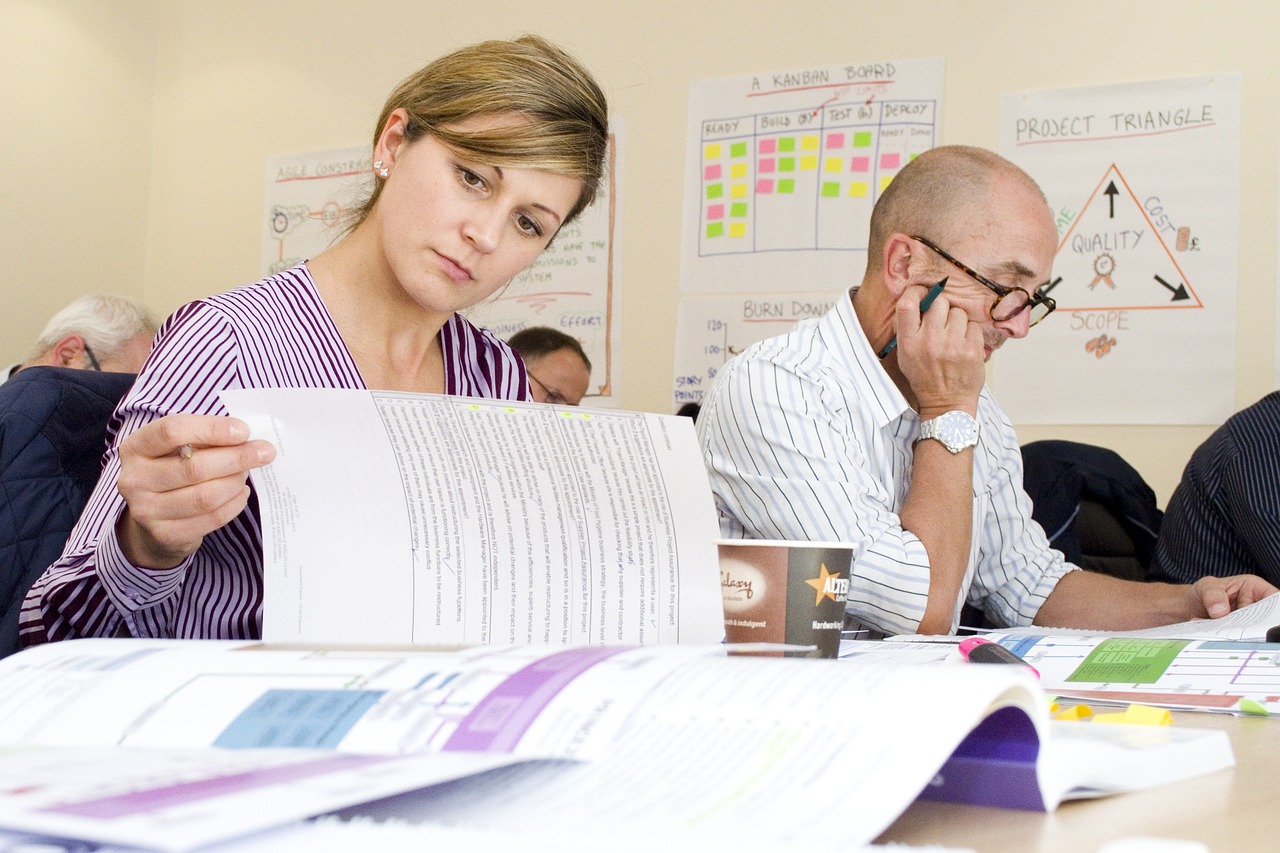
Risk Assessment
Risk assessment is a cornerstone of effective disaster management, serving as the compass that guides committees in identifying potential hazards that could impact their communities. Imagine trying to navigate a stormy sea without a map or a compass; it would be nearly impossible to reach safety. Similarly, without a thorough understanding of the risks, disaster management committees would struggle to prepare adequately for emergencies.
To conduct a comprehensive risk assessment, committees typically follow a structured process. This involves several key steps:
- Identifying Hazards: This step involves pinpointing natural and human-made hazards that could affect the community, such as floods, earthquakes, fires, or industrial accidents.
- Evaluating Vulnerabilities: Committees assess the community's vulnerabilities, including population density, infrastructure quality, and socio-economic factors that may exacerbate the impact of a disaster.
- Analyzing Potential Impacts: Understanding the potential consequences of identified hazards is crucial. This includes evaluating how a disaster could affect lives, property, and the environment.
- Prioritizing Risks: Not all risks are created equal. Committees must prioritize which risks require immediate attention and resources based on their likelihood and potential impact.
Each of these steps forms a critical part of the risk assessment process, enabling committees to develop targeted strategies that enhance community resilience. For instance, if a committee identifies that flooding is a significant risk, they can prioritize flood mitigation measures, such as improving drainage systems or creating community awareness programs about flood preparedness.
Moreover, risk assessment is not a one-time event; it’s an ongoing process. As communities evolve, new risks can emerge, and existing risks can change in severity. Therefore, committees must regularly update their risk assessments to reflect current conditions and ensure they remain effective in their preparedness efforts.
In essence, risk assessment is about knowledge and preparedness. It's the proactive measure that transforms uncertainty into actionable plans, allowing communities to face disasters with confidence. By understanding their risks, communities can not only protect themselves but also foster a culture of safety that permeates every aspect of daily life.
Q1: What is the purpose of a risk assessment in disaster management?
A1: The purpose of a risk assessment is to identify potential hazards, evaluate vulnerabilities, and analyze the potential impacts of disasters. This information helps committees prioritize resources and develop effective preparedness strategies.
Q2: How often should risk assessments be conducted?
A2: Risk assessments should be conducted regularly, ideally annually or whenever significant changes occur in the community, such as new developments, changes in population, or after a disaster event.
Q3: Who is involved in the risk assessment process?
A3: The risk assessment process typically involves disaster management committees, local government officials, community organizations, and sometimes residents who can provide valuable insights into local risks and vulnerabilities.

Training and Drills
When it comes to disaster management, are not just optional—they're essential. Think of them as the rehearsals before the big performance. Just as actors prepare for their roles, disaster management committees must ensure that every member is equipped with the necessary skills and knowledge to respond effectively during an actual emergency. These training sessions serve as a crucial foundation, enabling committee members and community volunteers to understand their roles, responsibilities, and the protocols that need to be followed when disaster strikes.
Training sessions can take many forms, from classroom instruction to hands-on practice. They often cover a wide range of topics, including emergency response procedures, first aid, and effective communication strategies. By engaging in realistic scenarios, participants can learn how to remain calm and make quick decisions under pressure. This is where the metaphor of a fire drill comes into play; just as students practice evacuating a building to ensure their safety, disaster management teams must practice their response to various emergencies. The more they drill, the more instinctive their reactions become.
Moreover, drills can be structured in several ways to maximize learning and effectiveness. For instance, tabletop exercises allow committee members to discuss and strategize their responses to hypothetical scenarios in a low-pressure environment. On the other hand, full-scale drills simulate real-life emergencies and involve community members, emergency services, and other stakeholders. These comprehensive drills not only test the committee's preparedness but also help to identify any gaps in their plans.
To give you a clearer picture, here’s a simple table that outlines the different types of training and drills commonly conducted by disaster management committees:
| Type of Training/Drill | Description | Purpose |
|---|---|---|
| Classroom Training | Theoretical instruction on disaster management principles. | To provide foundational knowledge. |
| Tabletop Exercises | Discussion-based simulation of disaster scenarios. | To develop strategic responses. |
| Full-Scale Drills | Realistic simulation involving community participation. | To test preparedness and coordination. |
Ultimately, the goal of these training sessions and drills is to create a culture of preparedness within the community. When residents see their local disaster management committee actively engaging in training, it fosters a sense of security and encourages them to participate in their own preparedness efforts. After all, in the face of a disaster, it's not just about having a plan—it's about being ready to execute that plan flawlessly. So, the next time you hear about a training session or drill in your area, consider joining in. Your engagement could make all the difference when it matters most.
- What types of disasters should communities prepare for? Communities should prepare for a range of disasters, including natural disasters like floods, earthquakes, and hurricanes, as well as man-made emergencies such as industrial accidents or terrorist attacks.
- How can I get involved in my local disaster management committee? You can reach out to your local government or community center to inquire about volunteer opportunities or training sessions.
- Are training sessions open to the public? Many training sessions and drills are open to the public, especially those aimed at community preparedness. Check with your local committee for details.
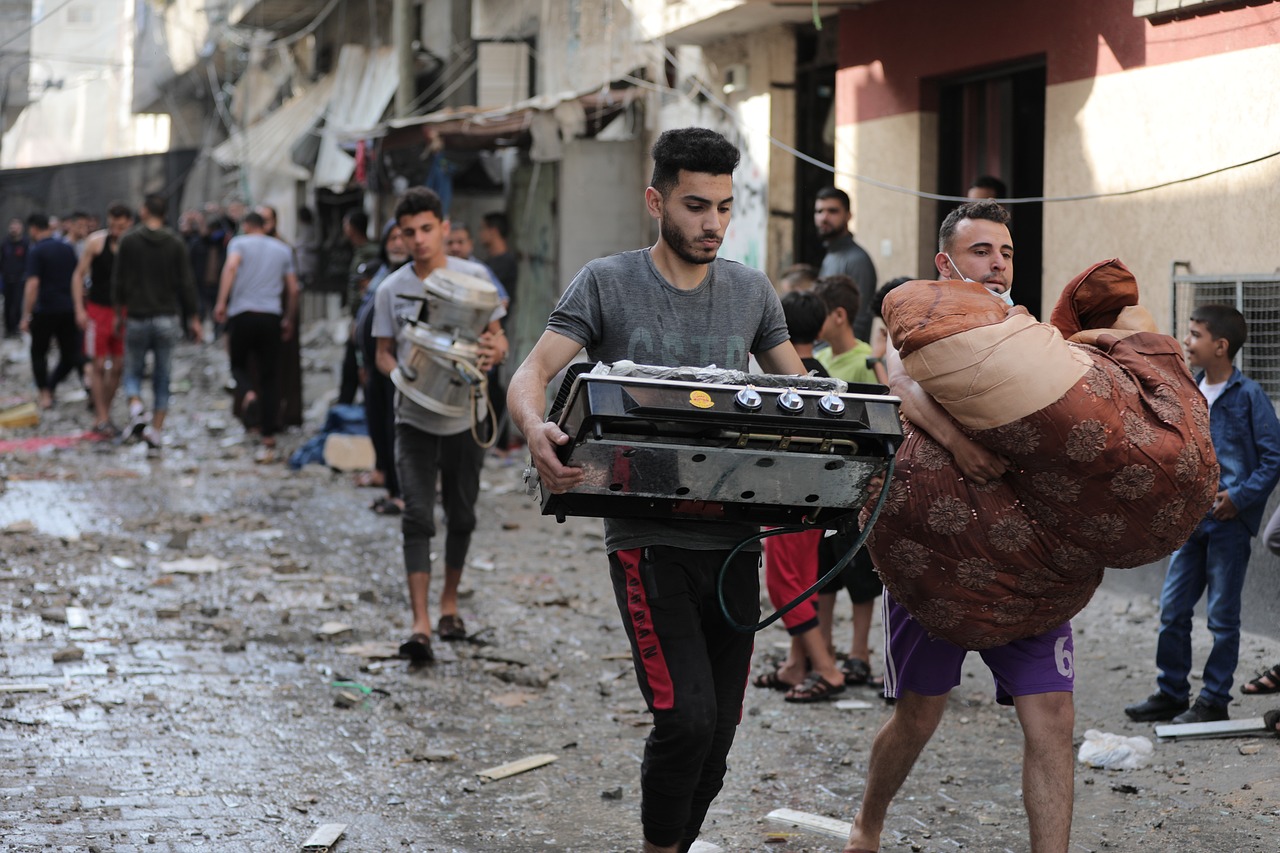
Response Coordination
When disaster strikes, the clock starts ticking, and every second counts. This is where comes into play, acting as the lifeline that connects various stakeholders in a community. Imagine a well-oiled machine where each cog is crucial to keeping everything running smoothly. In the context of disaster management, this means that committees must ensure that emergency services, government agencies, and community organizations work together seamlessly. Without this coordination, efforts can become fragmented, leading to confusion and delays that can put lives at risk.
At the heart of effective response coordination is communication. It's essential that all parties involved have access to real-time information. This involves establishing a centralized communication system that allows for quick updates and alerts. For instance, during a natural disaster like a hurricane, having a platform where emergency services can share updates about road closures or evacuation routes can make a significant difference. Timely information can help residents make informed decisions, ultimately saving lives.
Furthermore, response coordination isn't just about logistics; it's also about building relationships before a disaster occurs. Committees should foster strong ties with local organizations, businesses, and volunteers. These relationships create a network of support that can be invaluable during emergencies. For example, local businesses can offer resources or shelter, while community volunteers can assist in evacuation efforts or distribution of supplies. The more robust the relationships, the more effective the response.
To illustrate the importance of coordinated response efforts, consider the following table that highlights key roles during a disaster response:
| Stakeholder | Role |
|---|---|
| Emergency Services | Provide immediate assistance and medical care |
| Government Agencies | Coordinate resources and ensure public safety |
| Community Organizations | Offer support services and volunteer assistance |
| Local Businesses | Supply resources and shelter |
In summary, response coordination is not just a procedural step; it's a critical component that can mean the difference between chaos and order during a disaster. By fostering effective communication, building relationships, and clearly defining roles, disaster management committees can ensure that their communities are not only prepared but can respond swiftly and effectively when it matters most.
- What is the primary goal of a disaster management committee? The primary goal is to prepare for, respond to, and recover from disasters efficiently, ensuring community safety and resilience.
- How can community members get involved in disaster management? Community members can participate through volunteer programs, attending training sessions, and engaging in public awareness campaigns.
- Why is communication important during a disaster? Effective communication ensures that all stakeholders are informed and can coordinate their efforts, which is crucial for timely and effective responses.
- What are some examples of disaster management training? Training can include first aid, emergency response drills, and risk assessment workshops.
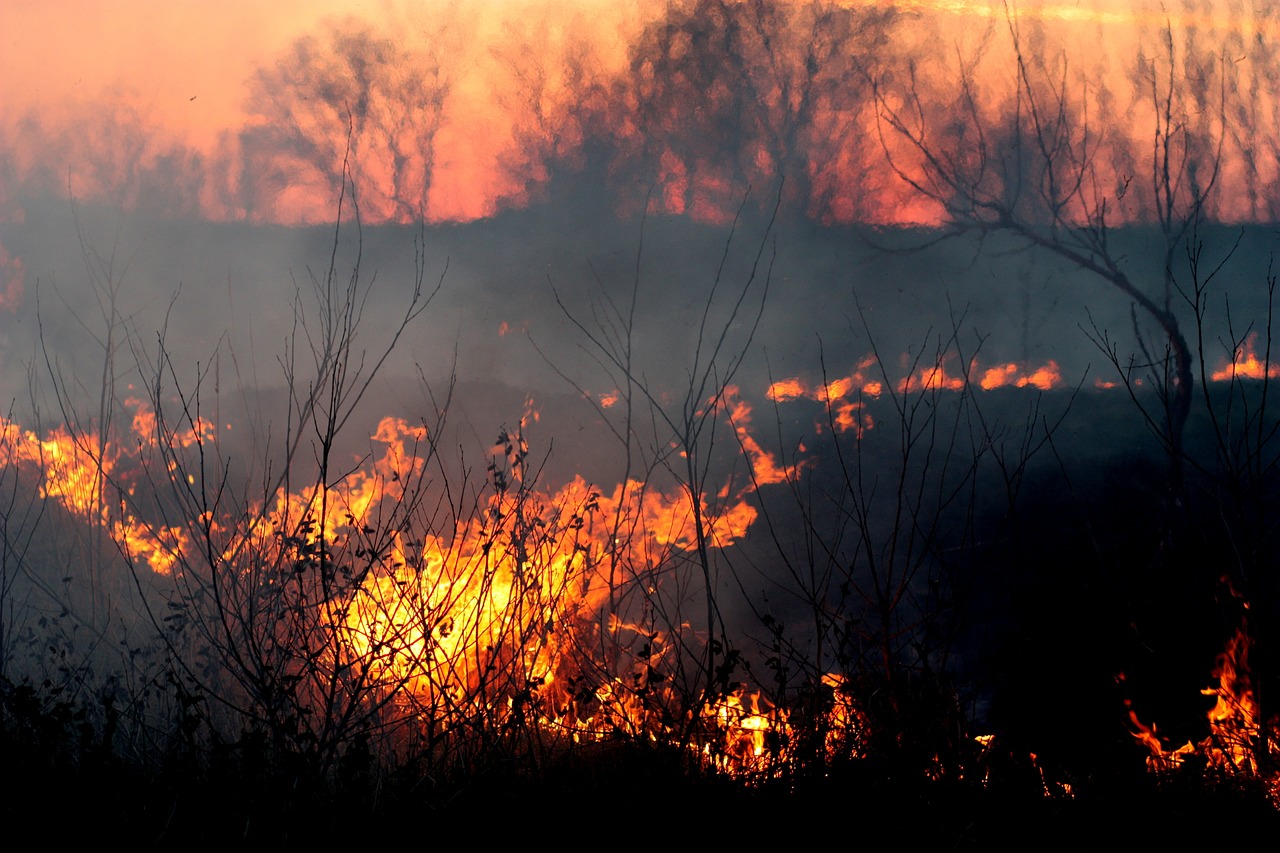
Community Involvement
Engaging the community in disaster management is not just beneficial; it’s essential for building resilience and ensuring safety. When residents become actively involved, they transform from passive recipients of aid into empowered participants in their own safety. This shift is akin to turning a ship's crew into navigators—everyone becomes responsible for steering toward safety and preparedness.
One of the most effective ways to foster community involvement is through collaboration and communication. Disaster management committees can create platforms for residents to voice their concerns, share their experiences, and suggest improvements. This participatory approach not only builds trust but also ensures that the strategies developed are relevant and effective. For instance, a community meeting might reveal specific vulnerabilities unique to that area, allowing the committee to tailor their plans accordingly.
Moreover, the establishment of volunteer programs plays a pivotal role in enhancing community engagement. By inviting community members to contribute their skills and resources, these programs can significantly boost the committee's capacity. Volunteers can assist in various ways, such as:
- Conducting outreach and education efforts
- Participating in training and drills
- Providing logistical support during emergencies
Through these volunteer initiatives, individuals not only feel a sense of ownership but also develop critical skills that can be lifesaving in emergencies. Imagine a neighbor who has learned first aid through a community program—when disaster strikes, that knowledge can make all the difference.
Another powerful tool for community involvement is the implementation of public awareness campaigns. These campaigns serve to educate residents about potential disaster risks and the necessary preparedness measures to take. Engaging storytelling, informative workshops, and interactive demonstrations can transform complex information into relatable content that resonates with the community. For example, a local fair could feature booths where families learn how to create emergency kits or develop communication plans. Such events not only inform but also unite the community under a common goal: safety.
In essence, community involvement is the backbone of effective disaster management. It creates a network of support, knowledge, and preparedness that can significantly mitigate the impacts of disasters. When everyone is on board, the community becomes a resilient fortress, ready to face any storm that comes its way.
Q1: How can I get involved in my local disaster management committee?
A1: You can start by attending community meetings, volunteering for programs, or reaching out to local government offices to express your interest in participating.
Q2: What types of training are available for community members?
A2: Many committees offer training in first aid, emergency response, and disaster preparedness. Check with your local committee for specific programs.
Q3: How do public awareness campaigns help in disaster management?
A3: These campaigns educate residents about risks and preparedness measures, fostering a culture of safety and resilience within the community.
Q4: Can I start my own volunteer program?
A4: Absolutely! If you see a need in your community, gather interested individuals and collaborate with local disaster management committees to create a program that meets those needs.
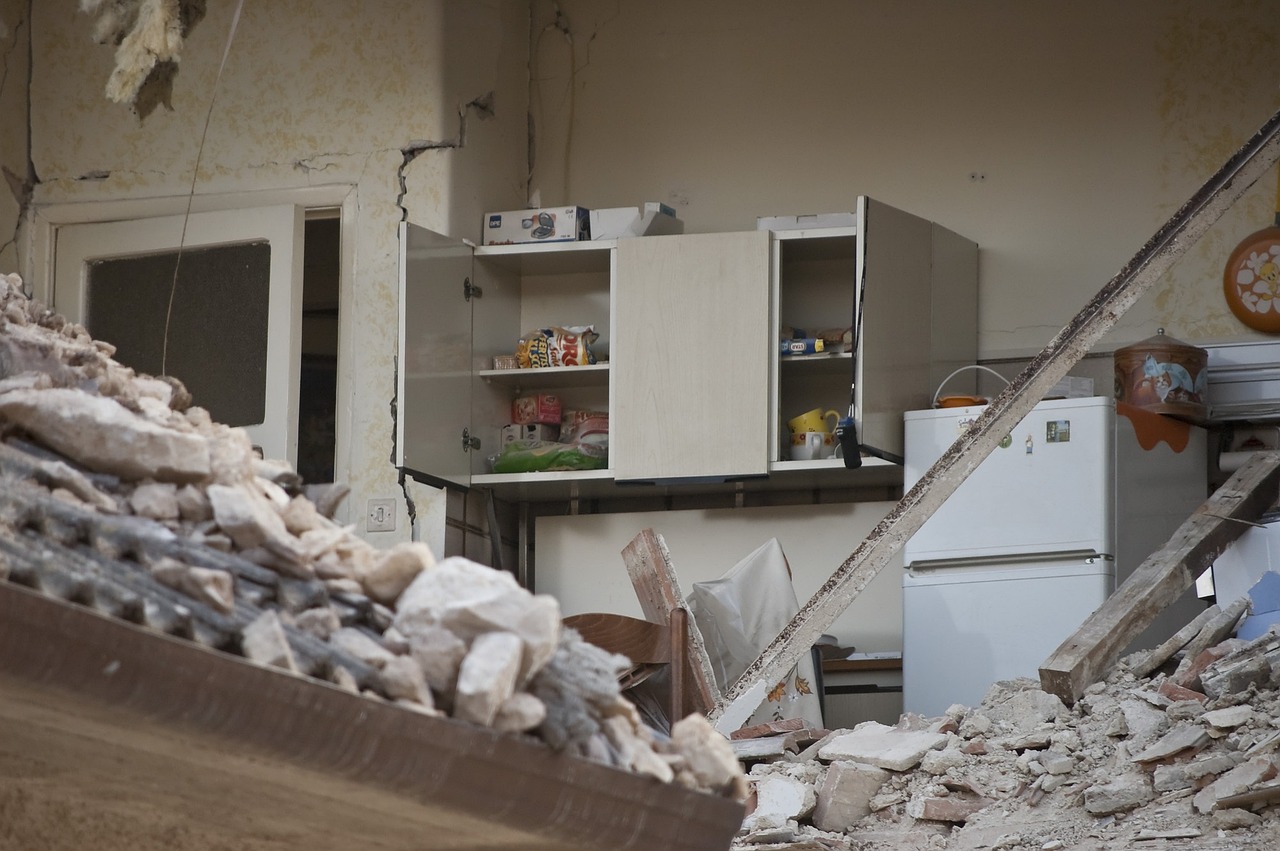
Volunteer Programs
Volunteer programs are the lifeblood of any disaster management committee. They not only enhance the committee's capacity but also foster a sense of community and shared responsibility. When individuals come together to offer their time and skills, they create a powerful force for good. Imagine a group of neighbors, united by a common goal, ready to spring into action when disaster strikes. This spirit of volunteerism is crucial in building resilience within communities.
Establishing a robust volunteer program involves several key components. First, it’s essential to recruit volunteers from diverse backgrounds, ensuring a wide range of skills and perspectives. This diversity can be a game-changer during emergencies, as different experiences can lead to innovative solutions. Once volunteers are recruited, the next step is to provide them with adequate training. This training should cover various aspects of disaster response, including basic first aid, emergency communication, and logistical coordination.
Furthermore, regular drills and simulations are vital. These exercises not only prepare volunteers for real-life scenarios but also help build camaraderie among team members. Picture this: a group of volunteers practicing their roles in a simulated disaster situation, communicating effectively, and working seamlessly together. Such experiences can significantly boost confidence and readiness.
Another important aspect of volunteer programs is recognition and appreciation. Acknowledging the hard work and dedication of volunteers can have a profound impact. Simple gestures, such as thank-you events, awards, or public recognition, can go a long way in motivating volunteers to continue their efforts. When volunteers feel valued, they are more likely to stay engaged and inspire others to join the cause.
To illustrate the impact of volunteer programs, consider the following table, which outlines some benefits of engaging volunteers in disaster management:
| Benefit | Description |
|---|---|
| Increased Capacity | Volunteers can help expand the committee's ability to respond to emergencies. |
| Community Engagement | Encourages residents to take an active role in their safety and preparedness. |
| Diverse Skills | Brings together individuals with various talents, enhancing problem-solving capabilities. |
| Cost-Effectiveness | Utilizing volunteers can reduce operational costs for disaster management initiatives. |
In conclusion, volunteer programs are not just an add-on; they are an essential component of a successful disaster management strategy. By fostering community involvement and equipping volunteers with the necessary skills, committees can create a resilient network that stands ready to face any challenge. So, if you’re looking to make a difference, consider joining or supporting your local disaster management volunteer program. Together, we can build a safer, more prepared community!
- What is the role of volunteers in disaster management?
Volunteers assist in various capacities, including emergency response, community education, and logistical support during disasters.
- How can I get involved in a volunteer program?
You can reach out to local disaster management committees or organizations that focus on emergency preparedness and express your interest in volunteering.
- What training is required for volunteers?
Training may vary by program but typically includes first aid, emergency response protocols, and communication strategies.
- Are there age requirements for volunteering?
Most programs welcome volunteers of all ages, although some may have specific age requirements for certain roles.
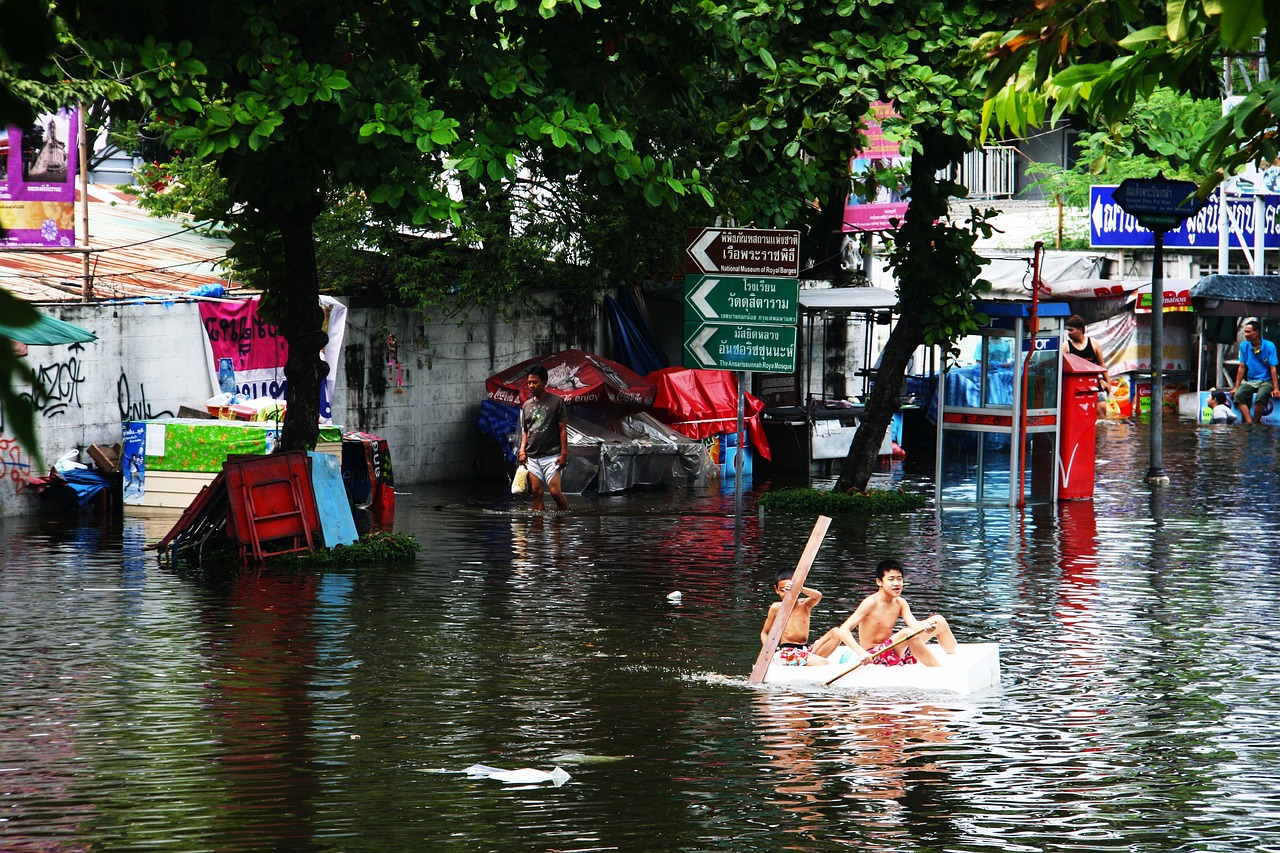
Public Awareness Campaigns
Public awareness campaigns are a cornerstone of effective disaster management, serving as the bridge between the committee and the community. These initiatives are designed to educate residents about potential disaster risks and the necessary preparedness measures they can take to protect themselves and their families. Imagine a community where every individual knows exactly what to do when disaster strikes; this is the goal of public awareness campaigns.
By utilizing various communication channels, such as social media, local news outlets, and community events, disaster management committees can reach a wide audience. These campaigns often focus on key messages that resonate with the community, such as:
- Understanding Risk: Educating residents about the types of disasters that are most likely to occur in their area, whether it's floods, earthquakes, or wildfires.
- Preparedness Planning: Encouraging families to create emergency plans, including communication strategies and evacuation routes.
- Resource Awareness: Informing the public about available resources, such as emergency kits and local shelters.
One effective method of delivering these messages is through interactive workshops and seminars. These events not only provide valuable information but also foster a sense of community spirit. Participants can engage with experts, ask questions, and even practice emergency drills, making the learning experience both informative and enjoyable. The more involved residents are, the more likely they are to remember and act on what they've learned.
Another vital aspect of public awareness campaigns is the use of visual aids and materials. Flyers, brochures, and posters can be strategically placed in high-traffic areas, ensuring that vital information is always within reach. Additionally, leveraging digital platforms allows for the dissemination of information in real-time, keeping the community informed about impending threats and safety measures.
Ultimately, the success of these campaigns hinges on community participation. When residents feel empowered and informed, they are more likely to take proactive steps towards their safety. This creates a ripple effect, as informed individuals can share knowledge with their neighbors, creating a more resilient community overall. In the face of a disaster, a well-informed community is often the difference between chaos and effective response.
1. What are public awareness campaigns?
Public awareness campaigns are initiatives aimed at educating the community about disaster risks and preparedness measures to enhance safety and resilience.
2. How do these campaigns benefit my community?
They empower residents with knowledge, encourage proactive behaviors, and foster a sense of community spirit, all of which contribute to a more resilient environment during emergencies.
3. What types of disasters should we prepare for?
It varies by location, but common disasters include floods, hurricanes, earthquakes, and wildfires. Understanding local risks is crucial for effective preparedness.
4. How can I get involved in local disaster management efforts?
You can participate by attending workshops, volunteering for local committees, or simply spreading awareness among your neighbors and friends.

Recovery and Rehabilitation
Post-disaster recovery is not merely about rebuilding what was lost; it's about transforming communities and making them more resilient for the future. The aftermath of a disaster can leave a community feeling shattered, both physically and emotionally. This is where the role of disaster management committees becomes pivotal. They act as a guiding force, helping communities navigate the complex journey of recovery and rehabilitation.
One of the first steps in the recovery phase is resource allocation. This involves assessing the damage and determining what resources are needed to restore infrastructure and support affected individuals. The committee must prioritize the allocation of funds, materials, and human resources to ensure that the most critical needs are addressed first. For example, in the wake of a natural disaster, immediate attention may be directed towards restoring essential services like water, electricity, and healthcare facilities. A well-organized committee can streamline this process, ensuring that assistance reaches those who need it most without unnecessary delays.
Moreover, effective recovery efforts hinge on community involvement. Engaging local residents in the recovery process not only helps in faster rebuilding but also fosters a sense of ownership and pride. When community members are involved in decision-making, they are more likely to contribute their time, skills, and resources. This can be facilitated through volunteer programs where residents can participate in rebuilding efforts, share their expertise, or even help in organizing community events aimed at recovery. Such initiatives not only speed up the recovery but also strengthen community bonds.
Another crucial aspect of recovery and rehabilitation is the implementation of long-term resilience strategies. These strategies focus on reducing vulnerability to future disasters. For instance, committees may advocate for building codes that enhance structural integrity, or they may promote land-use planning that avoids high-risk areas. By addressing the root causes of vulnerability, communities can better prepare for future challenges. It's about turning lessons learned into actionable plans that prioritize safety and sustainability.
In addition, the recovery phase often requires psychosocial support. Disasters can leave emotional scars that linger long after the physical damage has been repaired. Disaster management committees should incorporate mental health resources into their recovery plans, ensuring that individuals have access to counseling and support groups. This holistic approach to recovery not only aids in rebuilding but also nurtures the emotional well-being of the community.
To summarize, recovery and rehabilitation are multifaceted processes that require careful planning, resource management, and community involvement. Disaster management committees play a central role in facilitating these efforts, ensuring that communities not only rebuild but also emerge stronger and more resilient. By prioritizing resource allocation, engaging the community, implementing long-term strategies, and addressing psychosocial needs, committees can help pave the way for a brighter future.
- What is the primary role of a disaster management committee during recovery?
The primary role is to coordinate recovery efforts, allocate resources, and engage the community in rebuilding processes.
- How can community members get involved in recovery efforts?
Community members can participate through volunteer programs, attend recovery meetings, and contribute their skills and resources.
- What are long-term resilience strategies?
These are plans and actions aimed at reducing vulnerability to future disasters, such as improved building codes and land-use planning.
- Why is psychosocial support important in recovery?
It addresses the emotional and mental health needs of individuals affected by disasters, helping them cope with trauma and rebuild their lives.
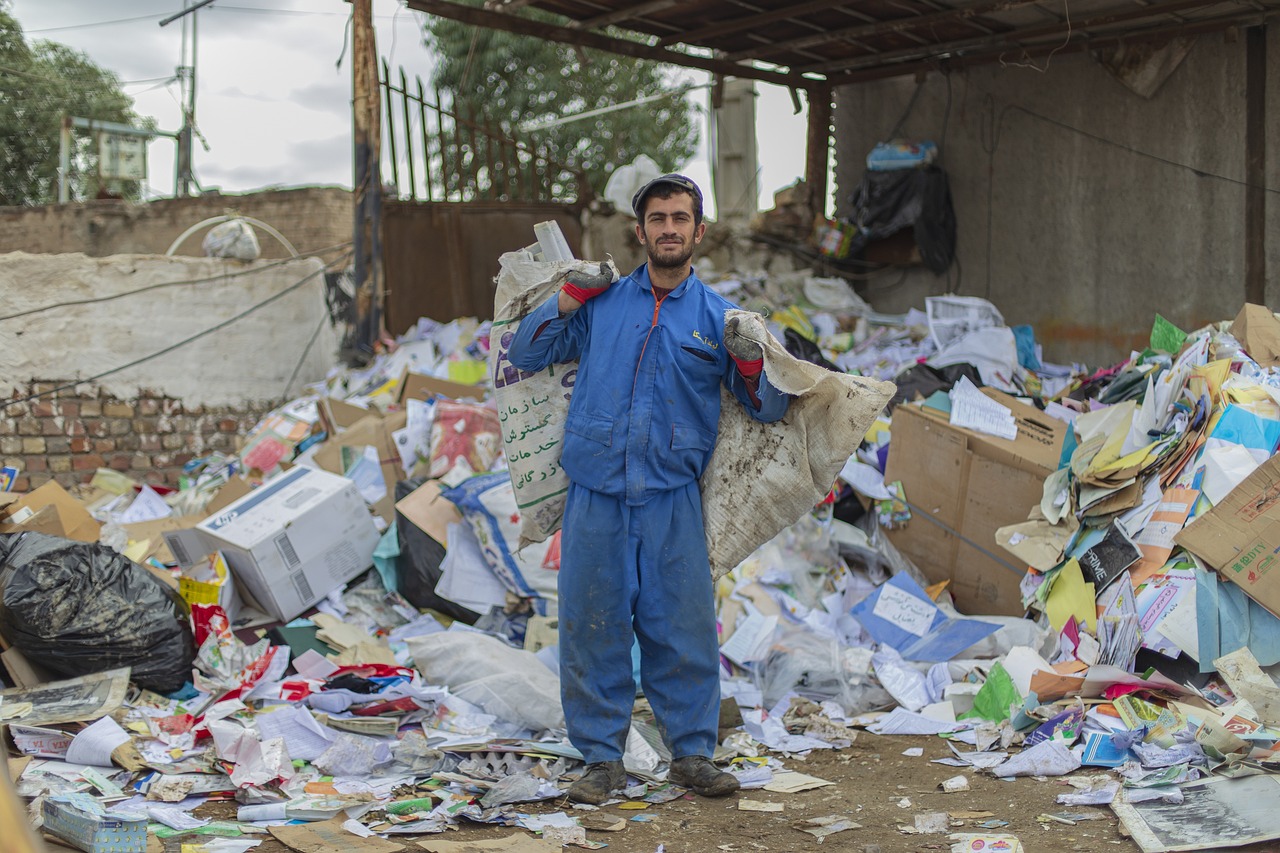
Resource Allocation
Effective resource allocation during recovery is akin to a well-conducted orchestra, where each instrument plays its part harmoniously to create a beautiful symphony. In the aftermath of a disaster, communities face numerous challenges, and the ability to distribute resources wisely can significantly impact the speed and effectiveness of recovery efforts. Disaster management committees are at the forefront of this process, ensuring that essential supplies, funding, and personnel are directed where they are most needed.
One of the primary responsibilities of these committees is to assess the needs of the community post-disaster. This involves conducting needs assessments to understand the specific requirements of affected individuals and infrastructure. For instance, if a flood has devastated a neighborhood, the committee must identify the areas most impacted and prioritize resource allocation accordingly. This might include:
- Food and water supplies for displaced families
- Medical assistance for those injured or affected by the disaster
- Restoration of essential services such as electricity and water
- Temporary housing solutions for those who have lost their homes
Additionally, committees often collaborate with local, state, and federal agencies to secure funding and resources. This collaboration is crucial because it allows for a more comprehensive approach to recovery. By pooling resources, communities can leverage additional support that might not be available at the local level. For example, federal disaster relief funds can be allocated to assist with rebuilding infrastructure, while local businesses might contribute materials or volunteer labor.
Moreover, transparent communication is vital during the resource allocation process. Keeping the community informed about available resources and how to access them helps build trust and ensures that assistance reaches those who need it most. This can be facilitated through community meetings, social media updates, and public announcements. By fostering an environment of openness, disaster management committees can enhance community engagement and participation, further strengthening recovery efforts.
In summary, resource allocation is a critical component of disaster recovery that requires careful planning, collaboration, and communication. By effectively managing resources, disaster management committees not only aid in the immediate recovery but also lay the groundwork for long-term resilience within the community. The ability to respond swiftly and effectively can mean the difference between a prolonged recovery and a swift return to normalcy.
Q: What is the role of a disaster management committee?
A: The disaster management committee is responsible for planning, coordinating, and implementing disaster preparedness, response, recovery, and mitigation strategies within a community.
Q: How does a community get involved in disaster management?
A: Communities can get involved by participating in training programs, volunteering for disaster response efforts, and engaging in public awareness campaigns organized by the disaster management committee.
Q: What are some common resources allocated during disaster recovery?
A: Common resources include food, water, medical supplies, temporary shelter, and funding for infrastructure repairs.
Q: How can I stay informed about disaster preparedness in my community?
A: You can stay informed by attending community meetings, following local government announcements, and engaging with disaster management committees on social media platforms.
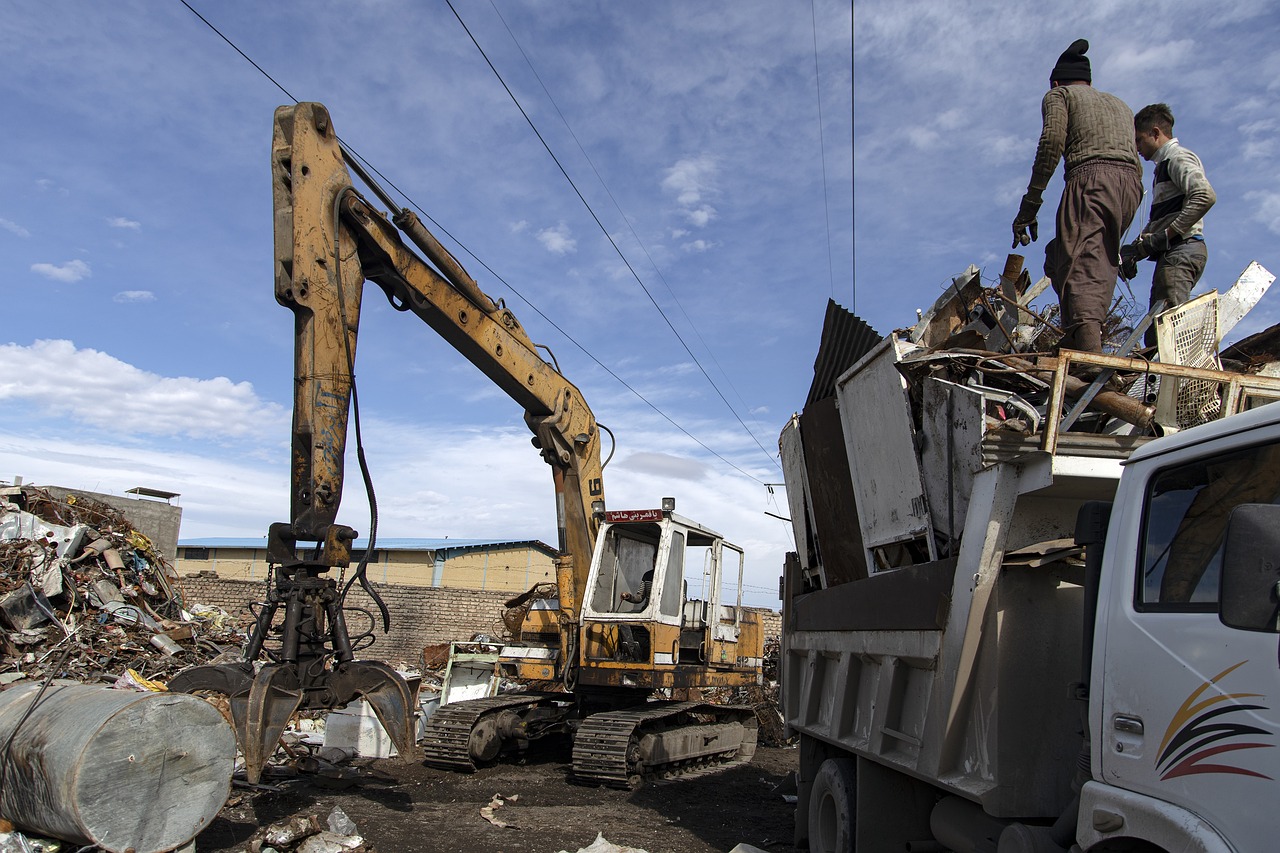
Long-term Resilience Strategies
When it comes to disaster management, are like the sturdy foundation of a house. They ensure that communities not only bounce back from disasters but also emerge stronger and more prepared for future challenges. These strategies are essential for reducing vulnerabilities and enhancing overall safety. But what exactly do these strategies entail?
First and foremost, long-term resilience involves investing in infrastructure. Think of it as upgrading your home’s security system after a break-in. Communities need to assess their critical infrastructure—roads, bridges, water supply, and communication systems—and make necessary improvements. This might include reinforcing buildings to withstand earthquakes or floods, or upgrading drainage systems to prevent waterlogging during heavy rains. By doing so, communities can minimize damage and ensure that essential services remain functional during and after a disaster.
Another key component is fostering community engagement. It’s not enough for a committee to develop plans in isolation; they need to involve the community in every step of the process. This means holding regular town hall meetings, conducting surveys to understand local concerns, and encouraging residents to participate in disaster preparedness training. When people feel invested in their community’s safety, they are more likely to take proactive measures in their own lives, creating a ripple effect of resilience.
Moreover, education and awareness play a crucial role in long-term resilience strategies. Committees should implement educational programs that inform residents about potential risks and the steps they can take to mitigate them. This could involve workshops, informational pamphlets, or even social media campaigns. By equipping residents with knowledge, communities can foster a culture of preparedness and ensure that everyone knows what to do when disaster strikes.
Additionally, establishing partnerships with local organizations can significantly enhance a community's resilience. Collaborating with schools, businesses, and non-profits can provide additional resources and expertise. For instance, a local school might host emergency drills, while businesses can offer logistical support during a crisis. These partnerships can create a network of support that strengthens the community's overall capacity to respond to disasters.
Lastly, it’s essential to develop a long-term recovery plan. This plan should outline the steps to be taken after a disaster, focusing on rebuilding not just physical structures but also the community’s spirit. A successful recovery plan includes mental health support, economic recovery initiatives, and strategies for restoring social cohesion. By addressing these aspects, communities can heal and thrive long after the disaster has passed.
| Strategy | Description |
|---|---|
| Infrastructure Investment | Upgrading critical infrastructure to withstand disasters. |
| Community Engagement | Involving residents in disaster preparedness and planning. |
| Education and Awareness | Implementing programs to inform residents about risks and preparedness. |
| Partnerships | Collaborating with local organizations for additional resources. |
| Long-term Recovery Plan | Outlining steps for rebuilding and supporting community recovery. |
In conclusion, long-term resilience strategies are not just a checklist; they are a comprehensive approach to ensuring that communities are ready for whatever challenges may come their way. By investing in infrastructure, fostering community engagement, promoting education, establishing partnerships, and developing recovery plans, communities can build a solid foundation for resilience that will serve them well into the future.
- What is the primary goal of a disaster management committee? The primary goal is to prepare for, respond to, and recover from disasters effectively, ensuring community safety and resilience.
- How can I get involved in my local disaster management committee? You can reach out to local government offices or community organizations to learn about volunteer opportunities and meetings.
- What types of disasters should communities prepare for? Communities should prepare for a range of disasters, including natural disasters like floods, earthquakes, and hurricanes, as well as man-made emergencies.
- Why is community engagement important in disaster management? Community engagement ensures that residents are informed, prepared, and actively participate in safety measures, enhancing overall resilience.
Frequently Asked Questions
- What is the role of a disaster management committee?
The disaster management committee plays a crucial role in preparing for, responding to, and recovering from emergencies. They coordinate efforts among various stakeholders, develop strategic plans, and ensure that resources are effectively allocated during disasters.
- How does a disaster management committee assess risks?
Risk assessment is conducted by identifying vulnerabilities within the community. This involves analyzing potential hazards, evaluating the community's preparedness, and prioritizing resources to implement preventive measures that can mitigate disaster impacts.
- Why is community involvement important in disaster management?
Community involvement is vital as it fosters collaboration and communication, empowering residents to actively participate in preparedness efforts. Engaging the community enhances resilience and ensures that everyone is informed and ready to respond during emergencies.
- What types of training do disaster management committees provide?
Disaster management committees provide various training programs, including emergency response drills, first aid training, and workshops on disaster preparedness. These programs ensure that both committee members and community volunteers are well-prepared to handle real-life disaster scenarios.
- How do committees support recovery after a disaster?
Committees support recovery by facilitating resource allocation, rebuilding infrastructure, and providing assistance to affected individuals. They develop long-term resilience strategies to ensure that communities can bounce back stronger and are better prepared for future disasters.
- What are public awareness campaigns?
Public awareness campaigns are initiatives aimed at educating residents about disaster risks and preparedness measures. These campaigns promote a culture of safety and resilience, encouraging community members to be proactive in their disaster preparedness efforts.
- How can I get involved with my local disaster management committee?
You can get involved by volunteering for programs, attending community meetings, or participating in training sessions. Many committees welcome community members who want to contribute their skills and resources to enhance overall preparedness and resilience.



















